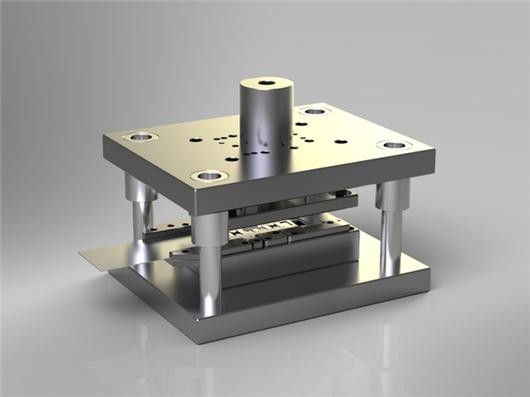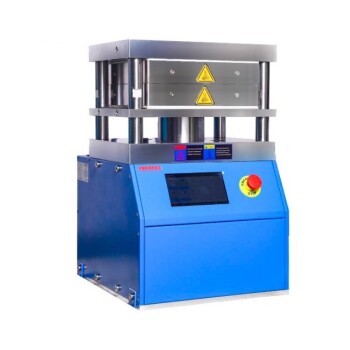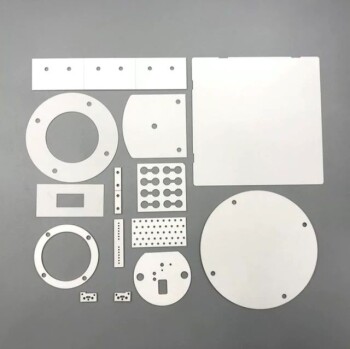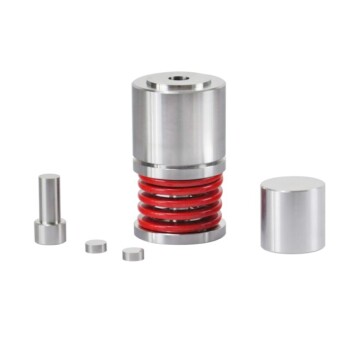Introduction to Hot Presses
Definition and Functionality
A hot press is a fundamental piece of industrial equipment that plays a pivotal role in shaping and forming various metal materials. This specialized machinery operates by heating the materials to precise temperatures and then applying controlled pressure to mold them into the desired shapes and sizes. The process involves several key steps: first, the metal is heated to a specific temperature that softens its structure, making it more malleable. Subsequently, mechanical pressure is applied to the heated metal, which forces it into the desired form. This method ensures that the final product not only meets the required dimensions but also exhibits enhanced mechanical properties.
Hot presses are versatile tools, capable of handling a wide array of metal types, from common alloys to more exotic materials. The flexibility in temperature and pressure settings allows for the creation of intricate parts and components, making hot presses indispensable in sectors such as automotive, aerospace, electronics, and construction. The ability to customize the processing parameters ensures that each product meets the stringent standards of modern industrial applications.
Moreover, the functionality of hot presses extends beyond mere shaping; they also contribute to improving the overall quality and durability of the finished products. By carefully controlling the heating and pressurizing processes, hot presses can eliminate internal defects and enhance the structural integrity of the metal, leading to products that are more reliable and long-lasting. This dual capability of shaping and enhancing material properties underscores the importance of hot presses in contemporary industrial operations.
Applications
Hot presses are integral to various industries, making them indispensable in modern industrial production. Their applications span across multiple sectors, each leveraging the unique capabilities of hot presses to achieve specific manufacturing goals.
Automotive Industry
In the automotive sector, hot presses are crucial for producing components such as engine blocks, transmission parts, and structural frames. These components require precise shaping and high strength, which hot presses deliver efficiently by heating and molding metals under controlled conditions.
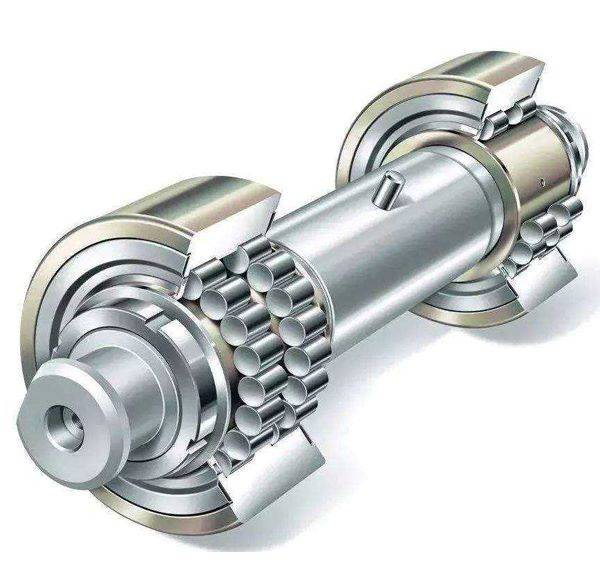
Aerospace Industry
The aerospace industry relies heavily on hot presses for manufacturing lightweight yet robust parts. These presses are used to create intricate structures like airplane fuselages, wings, and landing gear components. The ability to precisely control temperature and pressure ensures the production of high-quality, durable aerospace parts.
Electronics Industry
In electronics, hot presses are employed for the manufacturing of circuit boards and other precision components. The precise application of heat and pressure allows for the creation of intricate designs and reliable connections, essential for the functionality of electronic devices.
Construction Industry
The construction industry uses hot presses for producing various metal components, including beams, pipes, and fittings. These presses help in shaping and reinforcing materials to meet the stringent requirements of building and infrastructure projects.
Other Fields
Beyond these primary industries, hot presses find applications in numerous other sectors such as medical equipment manufacturing, energy production, and consumer goods production. Their versatility and precision make them a valuable tool across a broad spectrum of industrial activities.
By supporting the production of high-quality, complex components across diverse industries, hot presses underscore their significance in modern industrial processes.
Advantages of Hot Presses
Processing Efficiency
Hot presses are renowned for their ability to process metal materials with remarkable efficiency, precision, and cost-effectiveness. This efficiency is achieved through a combination of precise temperature control and calibrated pressure application, which allows for the rapid transformation of raw metal into finished products. The versatility of hot presses extends to handling materials of various shapes and sizes, making them indispensable in sectors ranging from automotive to aerospace.
In the automotive industry, for instance, hot presses are used to form critical components such as engine blocks and wheel hubs. These presses can process large volumes of metal in a short period, ensuring that production lines remain efficient and on schedule. Similarly, in the aerospace sector, the ability to create complex structures with high precision is crucial for the manufacture of airplane fuselages and other vital components.
The economic benefits of using hot presses are also significant. By minimizing material waste and reducing processing time, these machines offer a cost-effective solution for high-volume production. This efficiency not only lowers operational costs but also contributes to a more sustainable manufacturing process by reducing the environmental impact associated with material wastage and energy consumption.
In summary, the processing efficiency of hot presses is a key factor in their widespread adoption across various industries. Their ability to deliver high precision and low cost while handling a diverse range of materials ensures that they remain a cornerstone of modern industrial production.
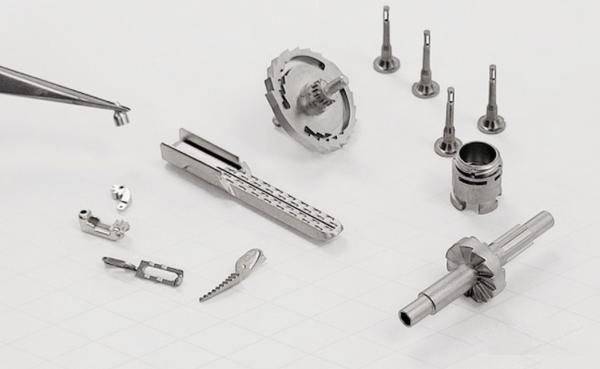
Customization and Complex Structures
The versatility of hot presses extends beyond mere shaping; it encompasses the ability to fine-tune temperature and pressure settings to achieve optimal processing outcomes. This adaptability is particularly crucial in manufacturing intricate components that require precise tolerances and complex geometries. For instance, the fabrication of wheel hubs, engine blocks, and airplane fuselages demands not only strength and durability but also a level of complexity that standard manufacturing techniques cannot achieve.
Hot presses excel in these scenarios by allowing for the precise control of both temperature and pressure. This dual control mechanism enables the creation of parts with intricate internal structures and detailed surface finishes, which are essential for performance-critical applications in industries such as aerospace and automotive. The ability to customize these parameters ensures that each part meets the specific requirements of its intended use, whether it be withstanding high stress, operating in extreme temperatures, or fitting into tight assembly constraints.
Moreover, the flexibility of hot press technology allows for the production of components that are not only complex but also lightweight and efficient. This is particularly important in sectors like aerospace, where weight reduction can significantly impact fuel efficiency and operational costs. By leveraging the capabilities of hot presses, manufacturers can innovate and push the boundaries of what is possible, leading to advancements in both design and functionality.
In summary, the customization and complexity enabled by hot presses are pivotal in modern manufacturing, enabling the creation of high-performance components that drive innovation across various industries.
Safety Considerations
Operational Safety
When operating a hot press, adherence to strict operating procedures is paramount to ensure both safety and machine stability. These procedures are meticulously designed to prevent accidents and maintain the integrity of the equipment. Operators must undergo comprehensive training to understand the nuances of the machine's operation, including the correct settings for temperature and pressure, as well as the safe handling of materials.
The importance of following these procedures cannot be overstated. Deviations can lead to severe consequences, such as material defects, machine malfunctions, and, most critically, operator injuries. For instance, improper temperature settings can cause materials to warp or crack, while incorrect pressure applications can result in uneven shaping or even equipment failure.
Moreover, regular inspections and adherence to maintenance schedules are crucial components of operational safety. These practices help identify potential issues before they escalate, ensuring that the hot press operates at peak efficiency and safety. By maintaining a vigilant approach to operational protocols, industries can significantly reduce the risk of accidents and enhance overall productivity.
Maintenance and Servicing
Regular maintenance and servicing of the hot press are essential to ensure not only its proper operation but also to extend its service life. This routine care involves several key activities designed to keep the machine in optimal condition.
Firstly, periodic inspections are crucial. These inspections should include checking the heating elements, pressure mechanisms, and control systems for any signs of wear or malfunction. Early detection of issues can prevent minor problems from escalating into major breakdowns, thereby saving both time and repair costs.
Secondly, lubrication of moving parts is vital. The hot press relies on various mechanical components that need to move smoothly to function correctly. Regular lubrication ensures that these parts operate without excessive friction, reducing the risk of mechanical failure and prolonging the machine's lifespan.
Additionally, cleaning the hot press after each use is necessary to remove any residual materials that could cause corrosion or interfere with future operations. This practice not only maintains the machine's appearance but also prevents contamination of subsequent batches of processed materials.
Lastly, calibration of the machine's sensors and controls should be performed regularly. This ensures that the hot press maintains the precise temperature and pressure settings required for different types of material processing. Accurate calibration is key to achieving consistent and high-quality results.
By adhering to these maintenance practices, operators can ensure that their hot press remains a reliable and efficient tool in their industrial processes.
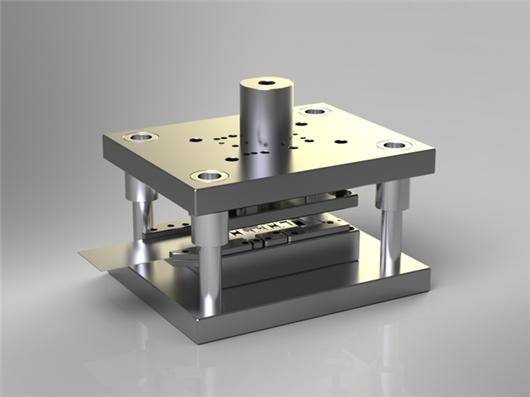
Conclusion
Importance in Industrial Production
Hot presses are not merely important; they are essential industrial equipment, playing a pivotal role in modern industrial production. Their significance is underscored by the continuous technological advancements that are perpetually enhancing their performance and functionality. These advancements are not just incremental; they represent a leap forward in efficiency, precision, and adaptability, making hot presses indispensable across various sectors.
In the automotive industry, for instance, hot presses are crucial for manufacturing components such as engine blocks and wheel hubs. The ability to precisely control temperature and pressure allows for the creation of complex structures that are both durable and lightweight. This not only enhances the performance of vehicles but also contributes to fuel efficiency and reduced emissions.
Similarly, in the aerospace sector, hot presses are integral to the production of airplane fuselages and other critical components. The high precision and strength provided by these presses ensure that aerospace parts can withstand the extreme conditions of flight, from high altitudes to rapid temperature changes.
Moreover, the electronics industry relies heavily on hot presses for the production of intricate circuit boards and other electronic components. The precise control over temperature and pressure ensures that these components are manufactured to exacting standards, essential for the reliability and performance of electronic devices.
In summary, the ongoing technological advancements in hot presses are revolutionizing industrial production by enabling the creation of high-quality, complex components across various sectors. This makes them not just important, but absolutely vital to the modern manufacturing landscape.
Related Products
- Manual High Temperature Heated Hydraulic Press Machine with Heated Plates for Lab
- Manual Heated Hydraulic Press Machine with Heated Plates for Laboratory Hot Press
- Automatic High Temperature Heated Hydraulic Press Machine with Heated Plates for Lab
- Automatic Heated Hydraulic Press Machine with Heated Plates for Laboratory Hot Press
- 24T 30T 60T Heated Hydraulic Press Machine with Heated Plates for Laboratory Hot Press
Related Articles
- High Pressure Tube Furnace: Applications, Safety, and Maintenance
- Manual Lab Hydraulic Pellet Press: Comprehensive Guide to High-Quality Pellet Preparation
- Advanced Ceramics Hot Press Sintering Technology and Equipment
- Guidelines for Safe Operation and Procedures of Flat-Plate Hot Press in Lamination Experiments
- Operation of Vacuum Hot Press Sintering Furnace
